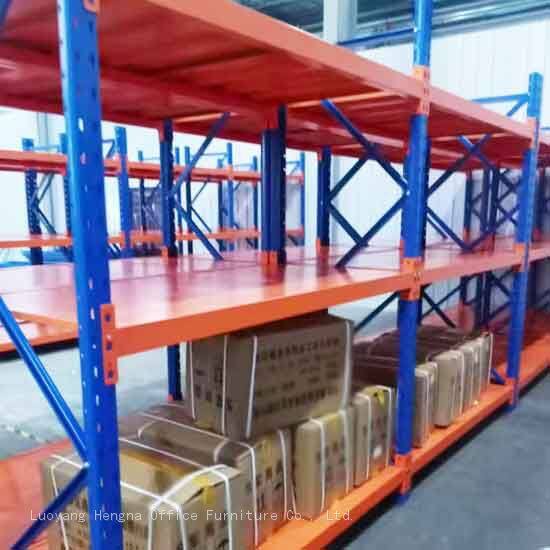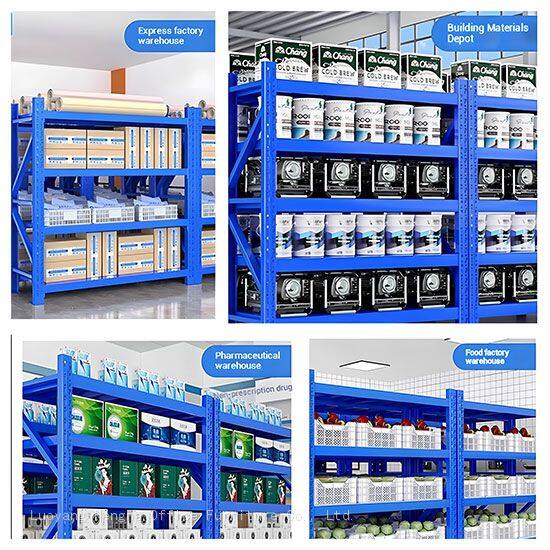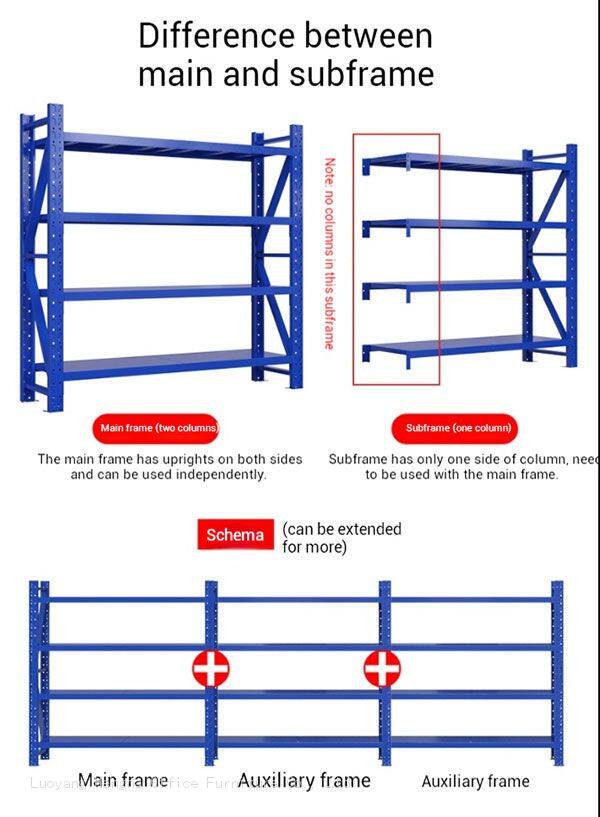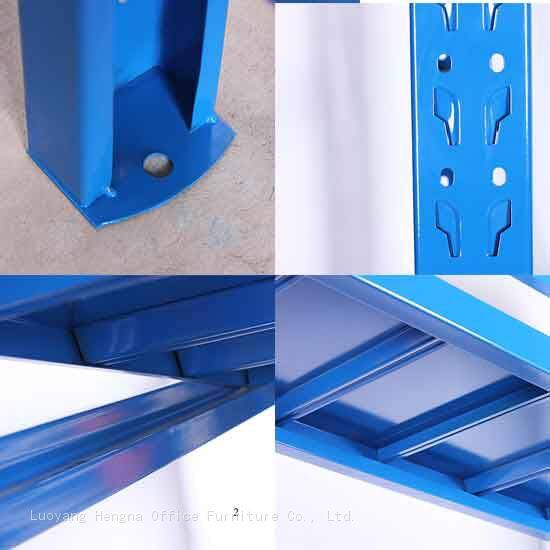-
 Sarah
Hi there! Welcome to my shop. Let me know if you have any questions.
Sarah
Hi there! Welcome to my shop. Let me know if you have any questions.
Your message has exceeded the limit.

Ensure Medical Supply Organization with Healthcare-Grade Steel Racks
2025-11-02 13:59:11
Healthcare facilities require storage solutions that meet stringent regulatory standards while maintaining efficiency, accessibility, and infection control. Healthcare-grade steel racks have emerged as the preferred solution for medical supply organization, offering the durability, hygiene, and compliance necessary for clinical environments. This comprehensive guide explores how specialized steel racking systems can optimize medical supply storage while ensuring patient safety and operational efficiency.
Healthcare Storage Requirements and Regulatory Compliance
Medical supply storage demands adherence to rigorous regulatory standards including FDA, Joint Commission, and OSHA requirements. Healthcare-grade steel racks must meet specific criteria for materials, construction, and cleanability to ensure compliance with these regulations. The storage systems must support proper inventory management, prevent contamination, and maintain organized access to critical medical supplies.

The healthcare environment presents unique challenges including infection control requirements, temperature-sensitive storage needs, and emergency access considerations. Steel racking systems designed for healthcare applications address these challenges through specialized features including antimicrobial coatings, sealed surfaces, and modular configurations that support various medical supply types. These specialized features ensure that storage systems enhance rather than compromise patient care and safety.
Material Construction and Infection Control
Healthcare-grade steel racks typically feature 304 stainless steel construction with specialized finishes that support infection control protocols. The non-porous surface prevents bacterial absorption and allows for thorough cleaning and sanitization between uses. Unlike alternative materials that may scratch, warp, or harbor pathogens, steel maintains its integrity even under rigorous cleaning protocols.
Many healthcare steel racks incorporate antimicrobial coatings that provide additional protection against healthcare-associated infections (HAIs). These coatings inhibit bacterial growth on surfaces, reducing contamination risks between cleaning cycles. The material resistance to healthcare cleaning agents and disinfectants ensures that storage systems can be thoroughly sanitized without degradation or damage.
Weight Capacity and Medical Supply Applications
Healthcare facilities store diverse medical supplies ranging from lightweight consumables to heavy equipment and bulk pharmaceuticals. Healthcare-grade steel racking systems offer substantial weight capacities, typically ranging from 200 to 1,000 pounds per shelf, accommodating various medical supply requirements. This capacity allows facilities to maximize vertical space while maintaining safe storage practices.
Different medical supply categories require specialized storage considerations that steel racking can address through customizable configurations. Pharmaceutical storage may require climate-controlled environments with security features. Medical equipment storage needs adjustable heights and weight capacity for various device sizes. Surgical supply storage requires clean, accessible organization with quick identification capabilities.
Customization for Different Healthcare Areas
Healthcare facilities encompass diverse areas, each with unique storage requirements and operational needs. Healthcare-grade steel racking systems can be customized to meet specific area requirements including pharmacies, operating rooms, emergency departments, and general patient care areas. Each area demands specialized configurations that support workflow efficiency and patient care.
Pharmacy benefitting from secure, climate-controlled steel racking with inventory management integration. Operating rooms require sterile storage systems with easy access to surgical instruments and supplies. Emergency departments need rapid-access storage for critical equipment and medications. General patient care areas require versatile storage for various supplies and equipment. This customization capability ensures optimal storage solutions throughout healthcare facilities.
Security and Controlled Substance Storage
Healthcare facilities must secure medications and controlled substances while maintaining accessibility for authorized personnel. Healthcare-grade steel racking systems incorporate specialized security features including lockable compartments, access control systems, and audit trails. These security features help prevent diversion and ensure compliance with DEA requirements for controlled substance storage.

Some steel racking systems integrate with electronic medication administration records (eMAR) and inventory management systems to provide real-time tracking and automated reorder capabilities. Biometric access controls, digital
authentication, and time-stamped access logs provide comprehensive security for sensitive medications and supplies. These advanced security features help healthcare facilities maintain compliance while ensuring rapid access when needed.
Temperature and Environmental Control
Many medical supplies require specific environmental conditions to maintain efficacy and safety. Healthcare-grade steel racking systems can be integrated with climate control systems to maintain consistent temperature and humidity levels for sensitive medications, vaccines, and biological samples. The steel construction provides excellent thermal stability and doesn’t off-gas chemicals that could compromise stored supplies.
Refrigerated storage applications require steel racking that maintains structural integrity in cold temperatures while allowing proper air circulation. Some systems incorporate specialized monitoring sensors that track environmental conditions and alert staff to deviations that could compromise supply integrity. This environmental control capability ensures that medical supplies remain safe and effective throughout their storage lifecycle.
Ergonomics and Accessibility
Healthcare efficiency depends on quick, easy access to medical supplies while maintaining staff safety and ergonomics. Healthcare-grade steel racking systems incorporate ergonomic design features including adjustable shelf heights, pull-out drawers, and tilt mechanisms that reduce physical strain on healthcare workers. These features are particularly important in high-volume areas where staff frequently access supplies.
Accessibility considerations include compliance with ADA requirements and accommodation of various staff heights and physical capabilities. Some steel racking systems incorporate specialized features such as lowered sections for wheelchair access or raised platforms for improved visibility. These ergonomic enhancements reduce workplace injuries and improve overall efficiency in healthcare settings.
Integration with Inventory Management Systems
Modern healthcare facilities utilize sophisticated inventory management systems to track supplies, automate reordering, and optimize stock levels. Healthcare-grade steel racking systems can integrate with these systems through barcode scanning, RFID technology, and weight sensors that provide real-time inventory data. This integration helps prevent stockouts, reduce waste, and improve supply chain efficiency.
Smart steel racking systems with IoT connectivity can monitor usage patterns, predict demand, and automatically generate purchase orders when supplies reach predetermined levels. Some systems incorporate digital displays that show inventory levels, expiration dates, and location information for quick identification. This technological integration enhances inventory accuracy while reducing manual counting and documentation requirements.
Installation and Compliance Considerations
Proper installation of healthcare-grade steel racking requires careful attention to regulatory compliance and operational requirements. Professional installation ensures proper anchoring, level assembly, and compliance with healthcare facility standards. Site preparation includes floor assessment, wall evaluation, and coordination with facility engineering departments.

Healthcare facility installations often require special scheduling to minimize disruption to patient care activities. Installation teams must follow infection control protocols and maintain clean environments during assembly. Some manufacturers offer healthcare-specific installation services with staff trained in medical facility requirements and safety procedures.
Cost Analysis and Operational Benefits
Investing in healthcare-grade steel racking delivers substantial returns through improved patient care, operational efficiency, and regulatory compliance. While initial costs may exceed those of commercial-grade alternatives, the long-term benefits include reduced medication errors, decreased supply waste, and enhanced staff productivity. The durability of steel construction provides excellent long-term value, with many systems lasting 20+ years even in demanding healthcare environments.
Improved organization and accessibility can reduce time spent searching for supplies, allowing healthcare workers to focus more on patient care. Enhanced security features prevent diversion and reduce losses. Compliance with regulatory standards avoids penalties and accreditation issues. These factors combine to deliver compelling financial returns for healthcare facilities investing in quality steel racking solutions.
Future Trends in Healthcare Storage
The healthcare industry continues to evolve, and steel racking systems are adapting to incorporate new technologies and features. Robotic integration with automated retrieval systems enhances efficiency while reducing physical strain on healthcare workers. Artificial intelligence-powered inventory management optimizes stock levels and predicts usage patterns.
Sustainability considerations are increasingly influencing healthcare equipment decisions, with manufacturers incorporating recycled materials and environmentally friendly production processes. Modular designs that can be easily reconfigured support changing healthcare delivery models and treatment protocols. These innovations ensure that steel racking will continue to meet evolving healthcare needs while adapting to new technologies and patient care requirements.

Tags: Medical Supply Organization, Healthcare-Grade Steel Racks, Steel Racks

